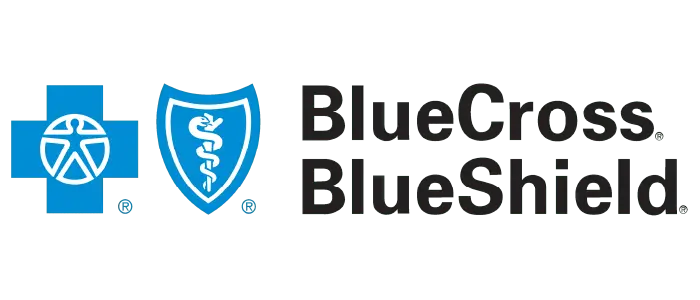
Methadone is a synthetic opioid agonist that produces effects in the body similar to heroin and morphine. It is taken as a tablet or syrup, and it helps to relieve opioid cravings or opioid use disorder without causing euphoria.
Methadone is a prescription medicine used in treatment to help individuals who struggle with addiction to heroin, narcotic painkillers, or other opioids. Using methadone also helps individuals to abstain from illicit opioid drugs. The drug also helps people manage cravings and methadone withdrawal symptoms in opioid treatment programs. It is a drug that is part of the National Institute on Drug Abuse, which is part of the United States Department of Health and Human Services. It is part of the treatment of opiate addiction, and it is included in the World Health Organization’s List of Essential Medicines. However, if taken methadone in higher doses, it can cause addiction problems and mental illnesses.
Methadone is a powerful opioid and can be very addictive. The drug can cause a number of problems, including decreased reaction time, reduced attention span, and dry mouth. It also lowers blood pressure and muscle strength. It can also lead to euphoria and paranoia. People addicted to methadone will often continue to use the drug, even in hazardous situations.
Methadone works by binding to the same receptors in the brain as morphine and other opioids. This helps block the euphoric effects of other opiates and makes it easier to cope with the symptoms of withdrawal. In some cases, methadone can be abused by snorting it, injecting it, or taking it orally in liquid form. Methadone maintenance is highly addictive and should be taken under the supervision of a physician.
A key part of methadone treatment is the supervision of patients taking the medication. This can be done by a nurse or a doctor, or even by a pharmacy but choosing a facility is the best option to treat methadone addiction. At Haven Detox, patients are usually placed in a room where the staff can keep an eye on them, and they must be supervised for at least 15-20 minutes after they take their first dose.
In addition to methadone treatment, other drug abuse treatment options are available to patients who suffer from methadone addiction. It is essential to find a treatment center that offers both medication and counseling services to help people overcome their dependence on methadone.
Haven Detox is one of the best methadone rehab centers provide specialized treatment for patients with this addiction. Our professional doctor’s team can help patients overcome the cravings associated with methadone and help them move toward a meaningful life. The main goal of our treatment is to help individuals regain control of their lives.
People who are using methadone drug overdose may experience sleepiness, fatigue, and dizziness. If you feel dizzy, it’s important not to drive or ride a bike while on methadone. The following are signs of a methadone overdose:
People who take methadone need to seek treatment if they start to show the above-described symptoms of addiction. The risk of addiction increases when methadone is combined with other substances, such as alcohol or street drugs. The best way to reduce the risks is to avoid drinking and using alcohol while taking methadone.
There are effective treatment options available for methadone addiction at Haven Detox. An inpatient treatment program requires staying in a facility. This treatment plan allows patients to be monitored by trained medical supervision 24 hours a day. It’s beneficial for people who have a history of addiction or co-occurring disorders or who have had relapses.
Methadone is a synthetic opioid prescribed primarily to manage opioid withdrawal and chronic pain by activating opioid receptors in the brain. While it is less euphoric than substances like heroin, methadone still carries significant addictive potential, especially when used outside of a prescribed, supervised regimen. Addiction can arise from a confluence of biological, environmental, and social factors:
Opioid receptor activation: Methadone’s mechanism—binding to the same receptors as other opioids—means it can produce tolerance and physical dependence over time.
Dose and duration: Higher doses or prolonged use increase the risk of dependence. Because methadone has a long half-life, users may inadvertently accumulate higher concentrations, leading to stronger withdrawal symptoms and cravings.
CNS depression: Combined use with other central nervous system depressants (e.g., alcohol, benzodiazepines) heightens sedation and respiratory depression, reinforcing use through the relief of severe withdrawal or anxiety.
Hereditary factors: A family history of substance use disorders can predispose individuals to addiction by genetic variation in opioid receptors and dopamine pathways.
Modeling and environment: Growing up around family members who misuse opioids may normalize drug-seeking behaviors and reduce perceived risk.
Drug availability: Easy access—whether through diversion from treatment programs or illicit markets—facilitates experimentation and misuse.
Peer pressure: Social groups that endorse or tolerate opioid use can encourage individuals to take higher or more frequent doses, even in the absence of pain.
Self-medication: Individuals with anxiety, depression, or trauma may use methadone to numb painful emotions, unintentionally fostering psychological dependence.
Stress and life events: High stress—such as job loss or relationship breakdown—can trigger relapse or escalation of use in vulnerable clients.
Pregnant women: Untreated opioid addiction during pregnancy may lead to both physiological dependence in the mother and neonatal abstinence syndrome in the infant, perpetuating complex medical and social challenges.
Adolescents and young adults: Early exposure to opioids—often influenced by risk-taking behaviors—can more rapidly establish patterns of misuse, as developing brains are particularly susceptible to the reinforcing effects of drugs.
Comorbid substance use: Individuals with a history of alcohol or other drug misuse are at heightened risk; combining depressants multiplies danger and can foster cross-dependence.
Together, these factors illustrate that methadone addiction is multifaceted, involving the drug’s pharmacology alongside personal history, mental health, social environment, and broader availability. Prevention and treatment must therefore be equally comprehensive—emphasizing careful medical supervision, behavioral therapy, peer support, and addressing underlying psychiatric or social vulnerabilities.
Methadone treatment—while effective for opioid dependence—carries significant drawbacks when misused or relied upon long-term:
Employment Impact: Withdrawal symptoms (nausea, sweating, irritability, anxiety) and daily clinic visits can impair work performance and attendance.
Relationship Strain: Dependency and mood disturbances may erode trust and communication with family or partners, making social support harder to sustain.
Pregnancy Risks: Though it mitigates illicit opioid withdrawal, methadone use during pregnancy must be carefully managed; unsupervised use can increase risks of fetal growth issues and neonatal withdrawal.
Health Consequences: Overdose risk rises as users chase diminished effects—symptoms include vomiting, low blood pressure, weakness, and cyanosis. Long-term use may also provoke cardiac arrhythmias and liver strain.
Safety Concerns: Chronic methadone exposure can impair cognitive and motor functions—raising the danger of accidents when driving or operating machinery—and, with other depressants, heightens the risk of respiratory failure.
Careful medical supervision, gradual tapering, and integrated behavioral support are essential to minimize these adverse effects.
Adolescents face unique vulnerabilities when it comes to substance use, including methadone. Early exposure to opioids can interfere with brain development, intensify emotional dysregulation, and lead to entrenched patterns of misuse. Because teens often engage in risk-taking behaviors and may struggle with peer pressure or untreated mental health disorders, their path to recovery requires specialized, age-appropriate care.
Never Alone – Adolescent Addiction Treatment Center offers a dedicated environment for young individuals facing opioid dependency, including methadone misuse. The center combines behavioral therapy, academic support, and family involvement, all in a welcoming, fun environment as part of its comprehensive teen residential treatment. Through compassionate care and a focus on long-term healing, Never Alone empowers adolescents to overcome addiction and reclaim their future.
This program is designed for teens—every part of it. With a maximum of just 22 teens in our care at any time, our team has the space to build meaningful, personal relationships with each adolescent and stay closely connected to every family.

Medical Director
Over 40 years in addiction medicine, with a focus on adolescent care for nearly three decades

Clinical Director
Leads trauma-informed therapy with a personalized approach

Program Director
Brings 20 years of youth-focused experience in family systems and crisis stabilization

Professional Chef
Prepares nourishing meals that create community and comfort, with over 25 years of experience

Creative Arts Therapist
Helps teens process emotions through music, art, and expression
Families come from all over the country for one reason: the care here works. Your teen isn’t just treated. They’re seen, supported, and given the tools to grow.



Many More
It’s time to make a change for your teen. Get answers today.
100% Confidential
You’ve tried what you can. If nothing else has helped, this may be the step that finally moves things forward.
You don’t have to figure it out alone. Reach out today to talk with someone who understands. We’ll help you decide if Never Alone is the right fit, and walk you through what happens next.